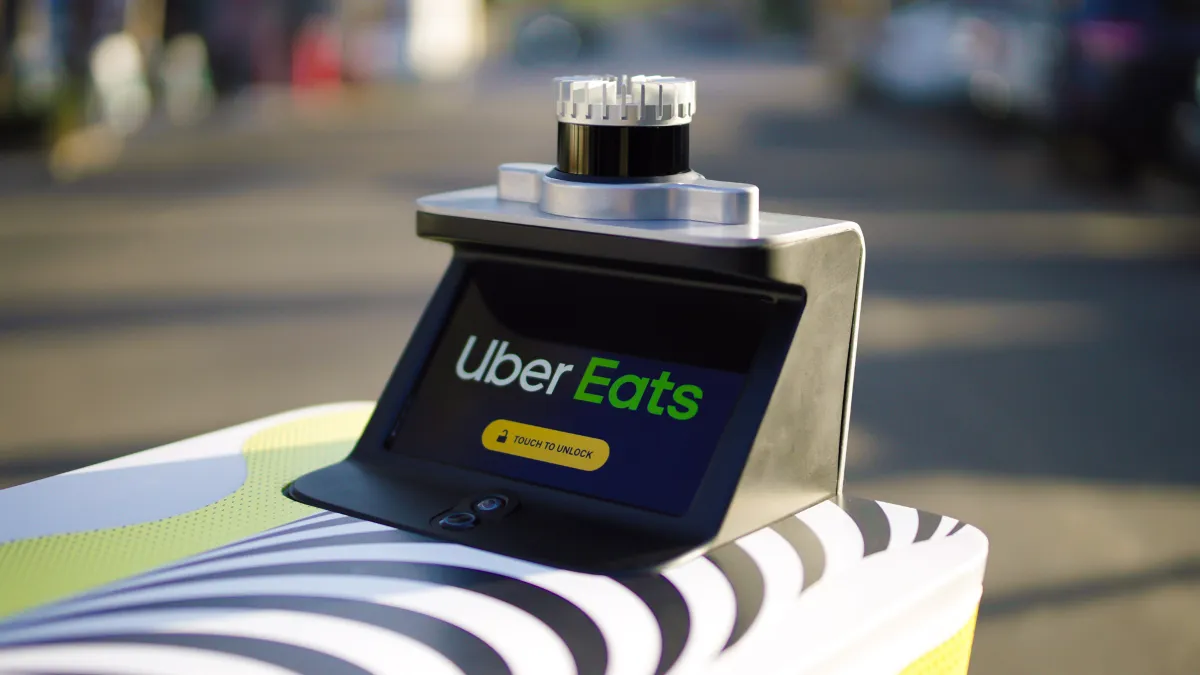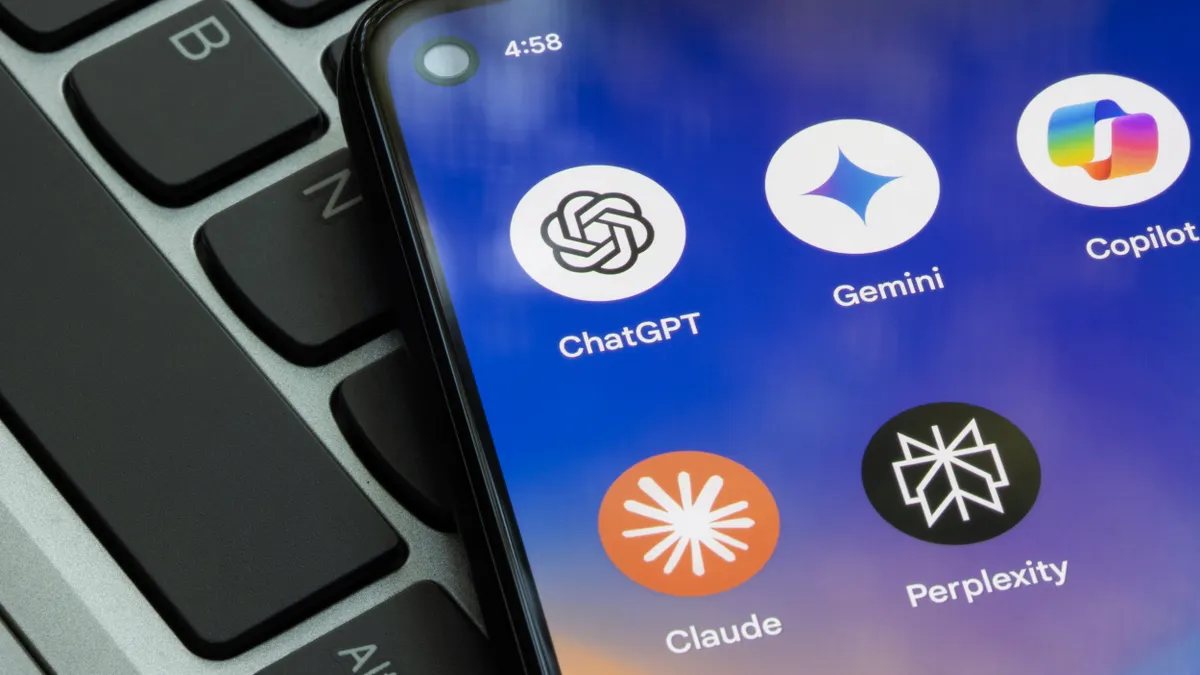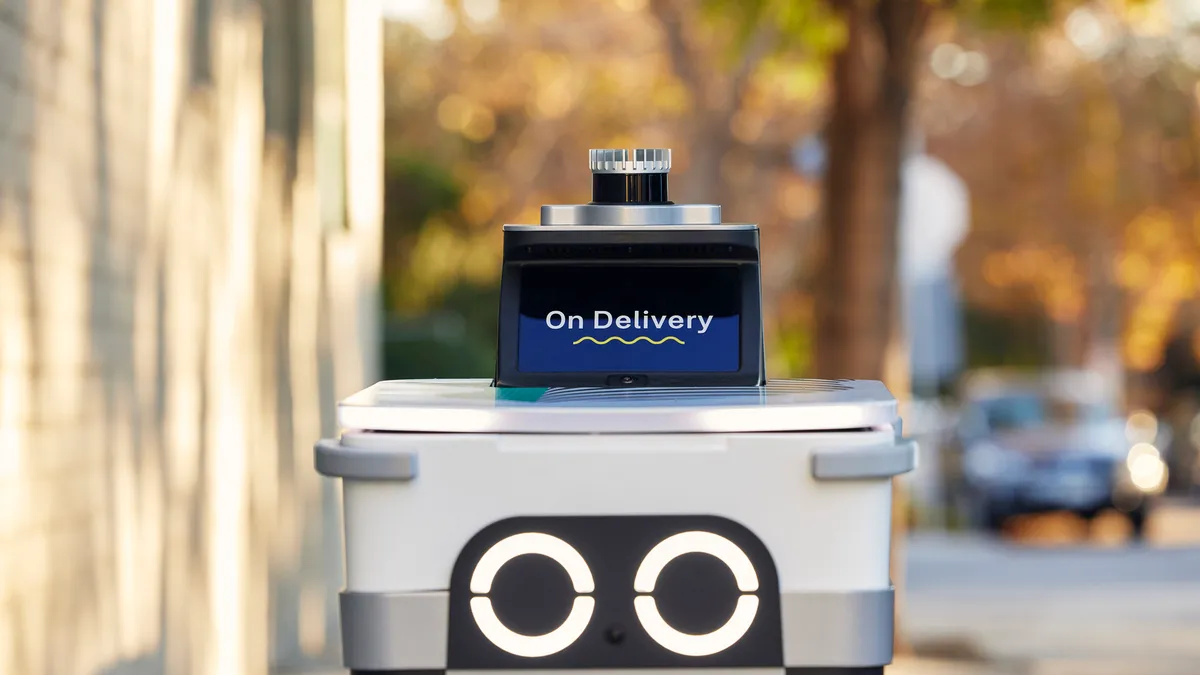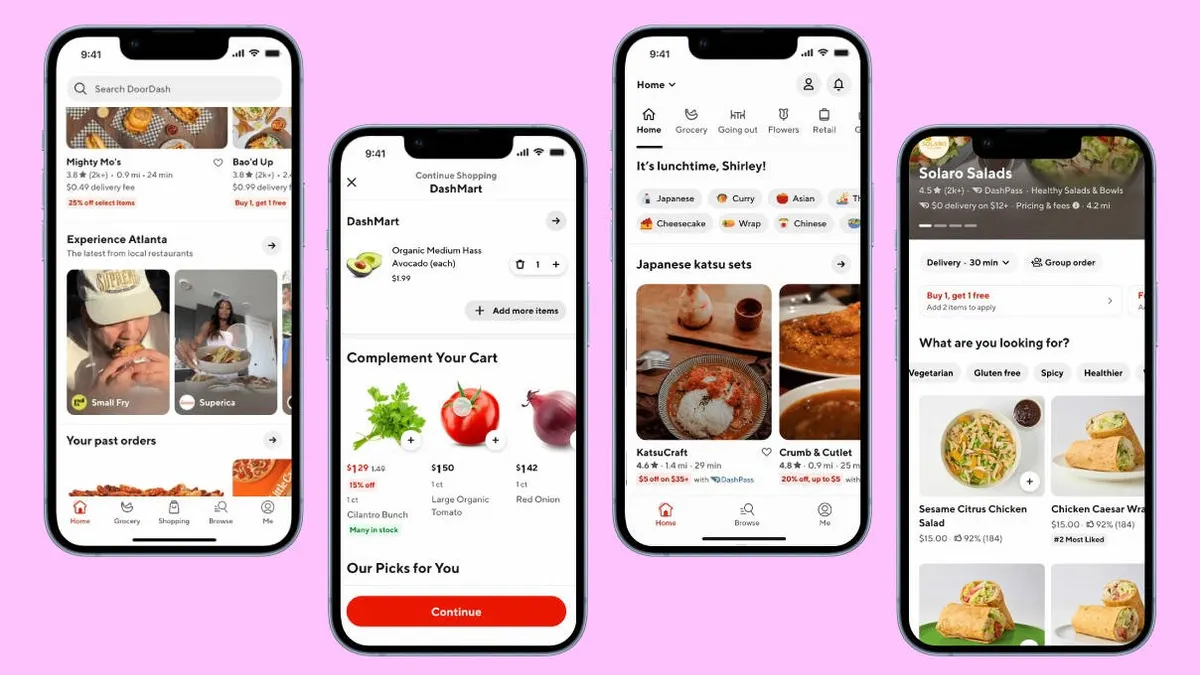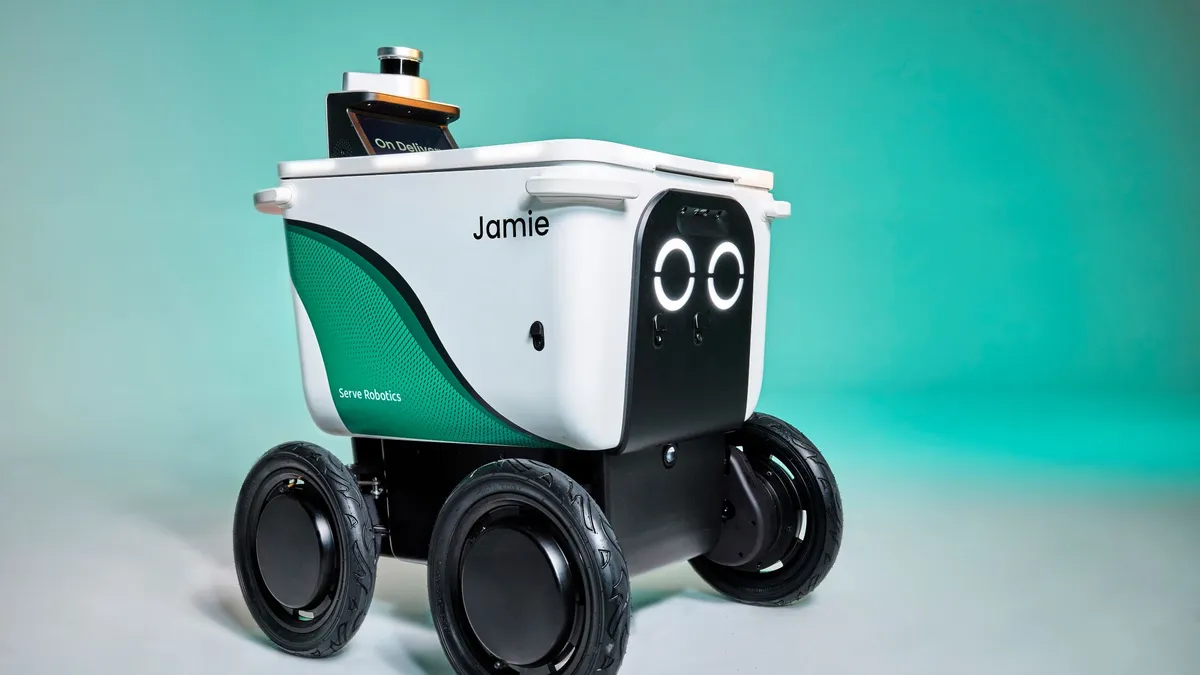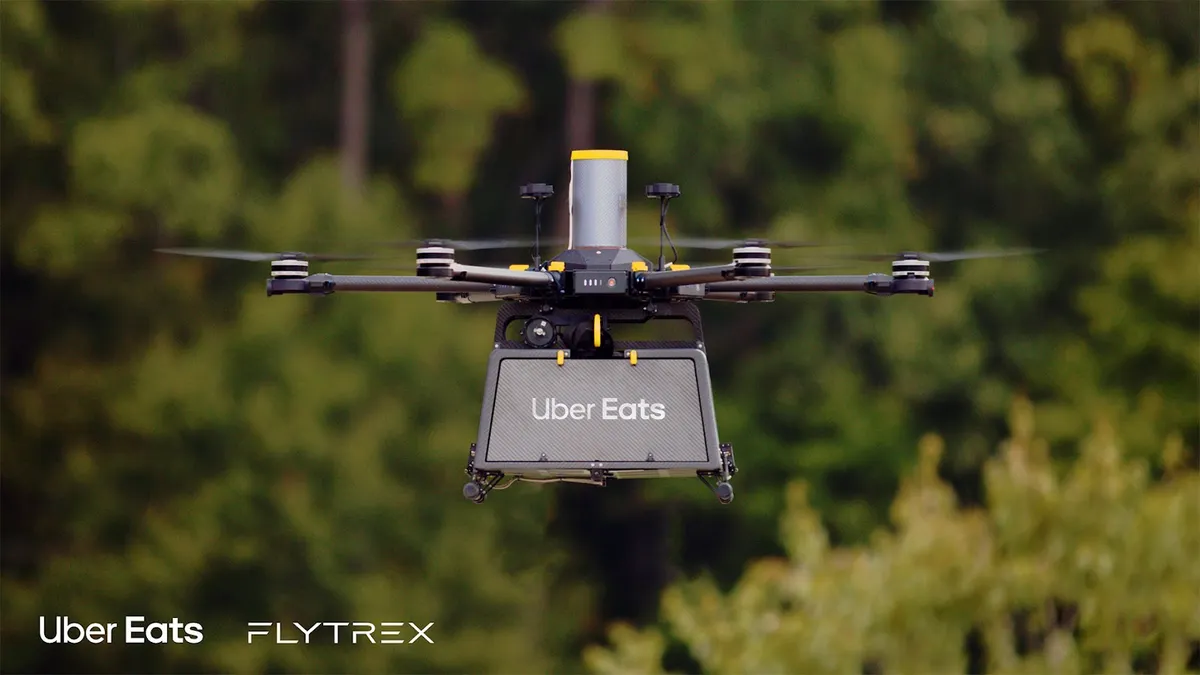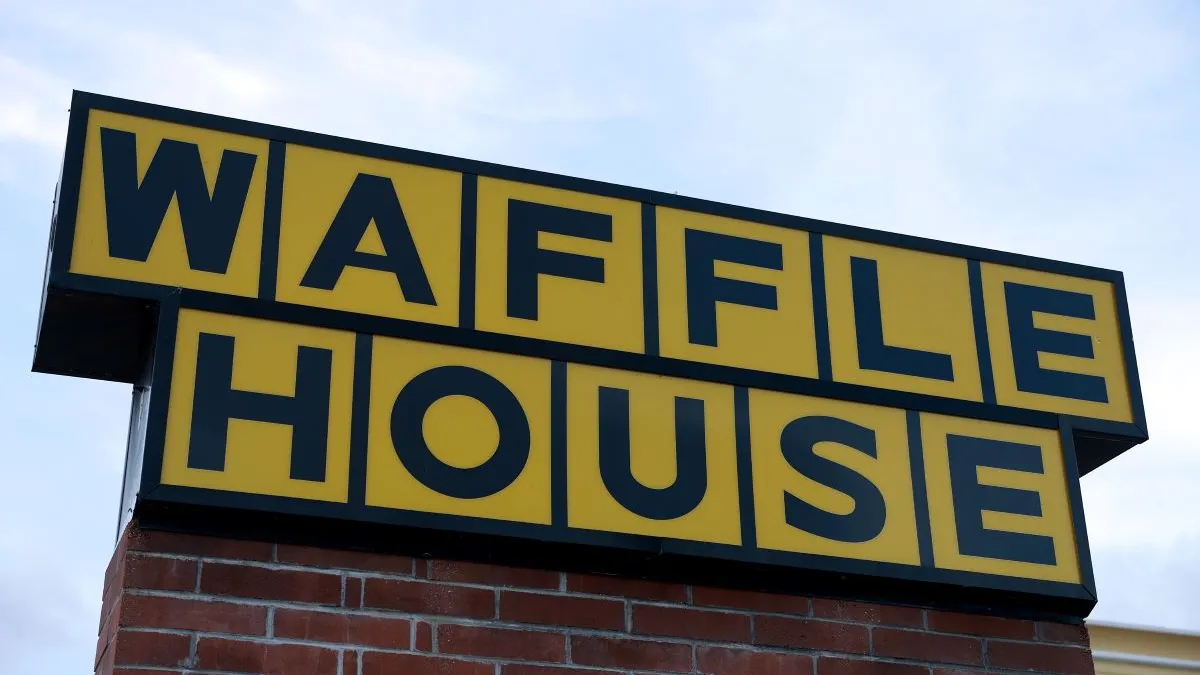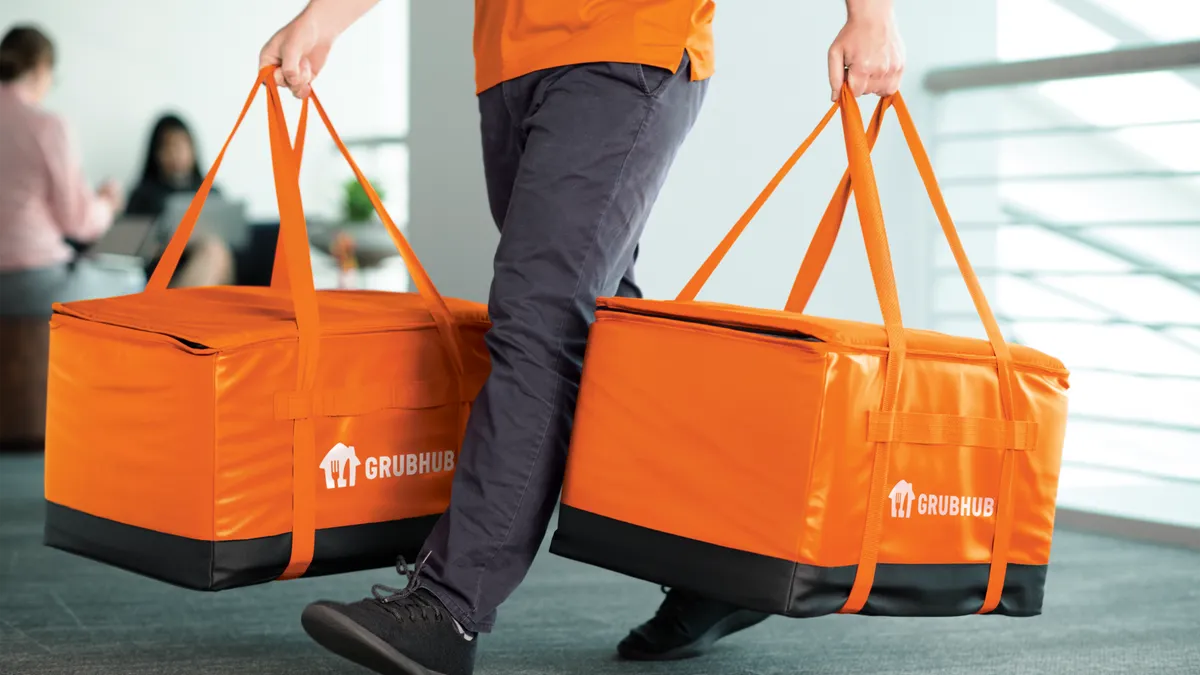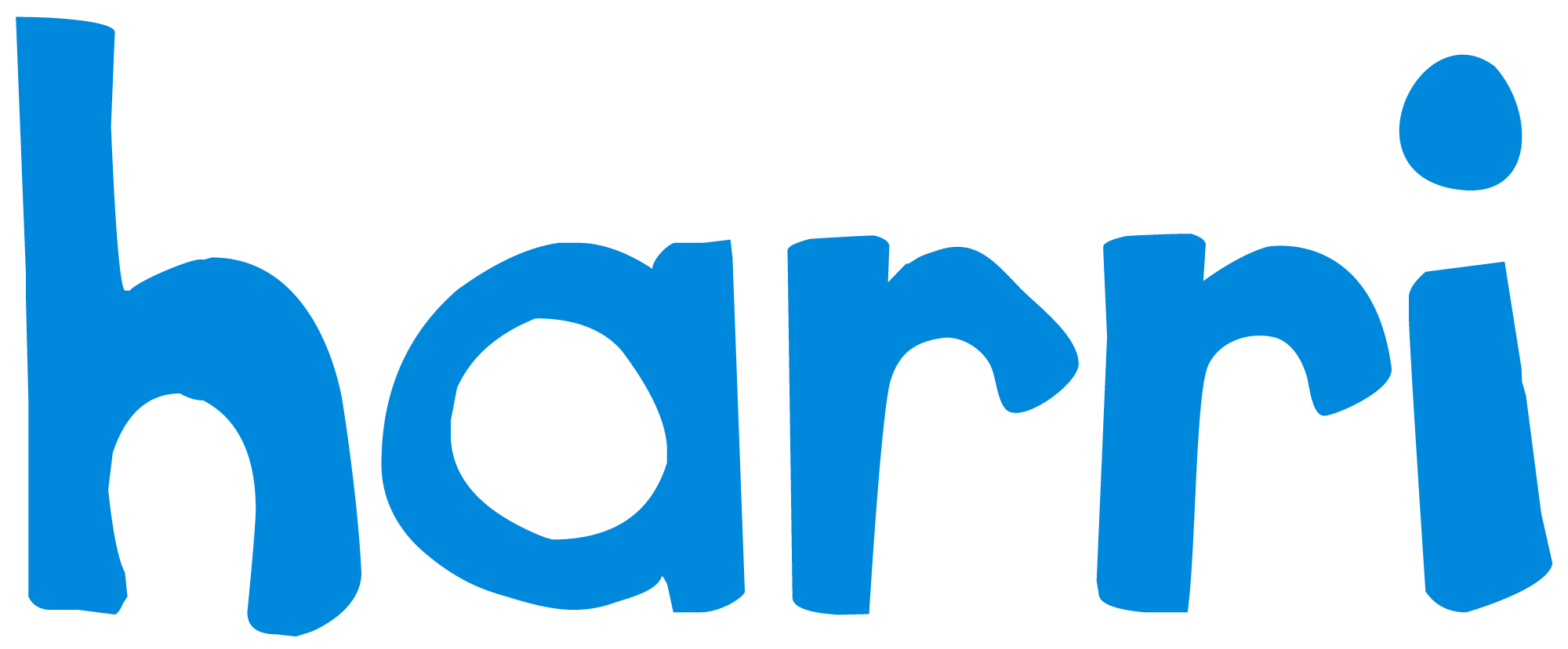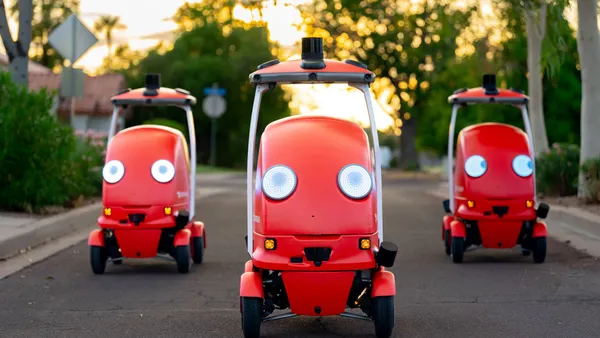As delivery is increasingly becoming more profitable, DoorDash, Grubhub and Uber Eats have stepped up product enhancements and diversified into new segments like grocery, alcohol, convenience stores and retail.
At Uber Eats' Go/Get 2022 event on Monday, the company continued that trend, announcing it is adding pickup ordering at various stadiums, piloting autonomous delivery, launching voice ordering and expanding its Vouchers program to general consumers to use for at events like weddings and to order food or rides.
With these enhancements Uber Eats aims to reach more customers and find ways to potentially provide lower cost deliveries. As of March, DoorDash continued to dominate the delivery segment with 59% market share, while Uber Eats remains the second largest company with 24% share, according to Bloomberg Second Measure. DoorDash and Grubhub have been dipping their toes into autonomous delivery for some time, while Uber Eats is just starting pilot programs with its latest announcement. Uber Eats, however, appears to be making big moves into stadiums unlike its competitors that have yet to go into this space in a significant way.
New products could also keep customers coming back, especially as dine-in sales continue to recover. Dine-in visits increased 38% during the first quarter compared to a 45% decline from a year ago, according to The NPD Group data emailed to Restaurant Dive. Off-premise, which includes carryout, drive-thru and delivery, declined 9% during the quarter compared to a 24% increase in the year-ago quarter.
“Delivery is continuing to surprise us positively as demand has remained resilient in a reopening world and we expect topline growth and profitability to expand through 2022,” Dara Khosrowshahi, Uber CEO, said during the company’s Q1 2022 earnings call.
Voice Ordering
Uber Eats will roll out voice ordering during the summer, starting with English-language capabilities before bringing additional languages online. The service integrates with Google, allowing customers to say a phrase like “OK Google, order food from Sweetgreen,” which would trigger the Uber Eats app. When the app pulls up, the guest can place an order with the requested restaurant via voice. Google Assistant will confirm the order details, and the customer can change or submit the order hands-free through the app.
Uber Eats' voice ordering function will initially be available only on Android devices, but the company expects to launch the feature on other devices in the future.
Grubhub added voice ordering through Amazon Alexa in 2017, but it doesn't appear to be an Alexa skill anymore, according to Amazon's website. Diners were able to use various Amazon devices to ask about their past three orders and reorder from their favorite restaurants. Grubhub didn't respond to a request for comment on the availability of voice ordering before press time. DoorDash partnered with Google in 2019 to add online ordering directly in Google Maps, Search and Assistant business listings, but DoorDash doesn't currently support voice ordering. Its products do work with screen readers and other assistive technology, however.
Uber Eats in Stadiums
The delivery platform is offering in-venue mobile ordering to select stadiums, allowing guests to order and pick up food or merchandise without waiting in line. Additionally, the app will be able to tell which stadium a guest is at and provide a list of specific foods at the stadium. Uber Eats will also identify the proximity of each concession to the individual, the company said.
This service was previously available through Postmates at Dodgers Stadium and Yankee Stadium, but is has been expanded to Angels Stadium in Anaheim, California; Capital One Arena in Washington, D.C.; Minute Maid Park in Houston; and PayPal Park in San Jose, California. It also is available at Roazhon Park in Rennes, France, and the company is looking to add more stadiums around the world. While Uber Eats is also considering expansion into venues such as concert halls, festivals and theaters. This isn't the first time Uber Eats has delivered outside of traditional locations. It piloted airport delivery at Toronto Pearson airport in Canada in 2019.
While Grubhub was looking into in-venue ordering with possible delivery to seats as early as 2017, the company entered into its first professional sports venue partnership in 2021 with the Washington Commanders at FedEx Field. Fans scan a QR code on the back of their seats, order via Grubhub and pick up at the concession stand. Inter Miami CF has also partnered with Grubhub for in-stadium ordering. DoorDash doesn't currently work with stadiums, but it bought Bbot earlier this year, which could present capabilities later on. Bbot's in-store digital ordering and payments work with a wide virty of hospitality businesses including restaurnts, bars, brewerires, food halls as well as settings like hotels, airports and stadiums.
Autonomous Delivery
This month, Uber Eats will be piloting two autonomous delivery programs in Los Angeles, the company said. It has partnered with Serve Robotics, which it spun off from Postmates post-acquisition in March 2021, and Motional, which operates an all-electric autonomous vehicle fleet. Uber Eats originally announced it would be testing autonomous delivery with Motional in December.
Both pilots will be small to start and Uber Eats doesn’t anticipate an initial change in price for merchant partners. Select merchant partners will be invited to join as they expand. Participating restaurant partners will prepare orders as usual and be prompted by the Uber Eats merchant app when it is time to place the order into the sidewalk robot or autonomous vehicle. The pilot with Serve will test short-range deliveries while Motional will test high-capacity, long-range deliveries, the company said.
Eligible consumers in these cities will see a notification pop up on their Uber Eats app that will say "Autonomous vehicles may deliver your order," at which point they can choose to opt in or out. The company expects deliveries to be within its global average of 30 minutes. Customers will be charged for these deliveries, including the cost of food, but Motional and Uber expect delivery service fees that would normally be applicable, such a those charged for drivers, may not be charged during the initial pilot. For customers that use the Serve bots and add a tip, they would receive a refund.
Customers participating in the pilot will receive a passcode to access their meals from the autonomous vehicles when their orders arrive. Serve bots will open their cargo containers while Motional vehicles will unlock the backdoor with the meal.
Autonomous delivery has been an ongoing trend with third-party providers, especially since they can offer lower delivery costs and make small orders more cost-effective. Grubhub has been offering autonomous delivery at various colleges and universities since 2021. It ended its partnership with Yandex earlier this year, but is looking for alternative service options. DoorDash has also been exploring autonomous delivery, originally piloting autonomous food delivery with Cruise in San Francisco in 2019. That same year, it bought Scotty Labs, a startup developing autonomous and remote-controlled vehicle technology.



